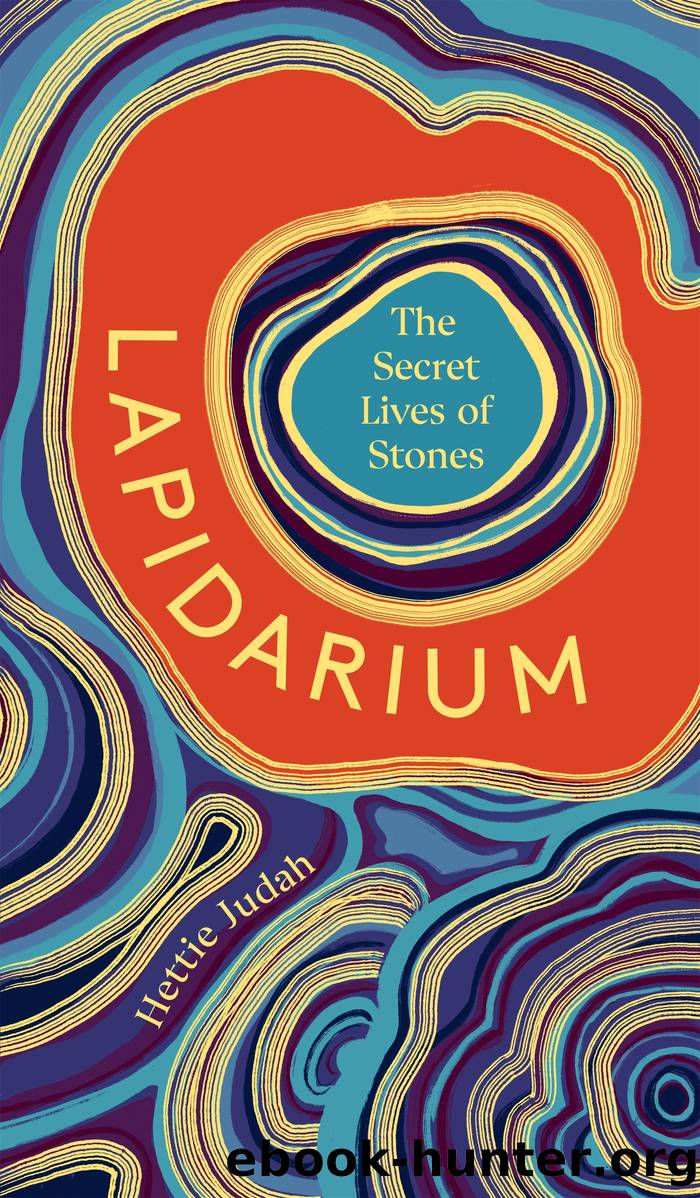Lapidarium by Hettie Judah

Author:Hettie Judah
Language: eng
Format: epub
Publisher: John Murray (Publishers)
#05
GYPSUM
JEAN NOUVELâS EXPANSIVE, EXPENSIVE, TECHNICALLY AMBITIOUS National Museum of Qatar building opened in Doha in 2019. The lauded French architect searched for an emblem that evoked art and nature, ancient and modern, and settled on a gypsum formation known as the desert rose â a natural growth of fine interlocking sandy-coloured discs which he translated at a vast scale into the buildingâs attention-seeking structure. Architecture critics at the time likened Nouvelâs outsized (reinforced concrete) crystal discs to a piece of âaccelerated geologyâ, noting how interior spaces served the radical shape of the structure: the focus of this museum was its building, the displays more or less an afterthought.i
In nature,the desert rose is formed of sand-infused crystal âpetalsâ that grow after rain in the arid landscape: it is a piece of geological flamboyance from a mineral shape-shifter. Gypsum takes many forms. One is the clear, spiky, crystal selenite (after Selene, goddess of the moon: see also Moon Rock p. 146). The Naica mine in Chihuahua, Mexico, is home to two selenite formations that make Jean Nouvelâs structure look blushingly conservative. Surfaces in the Cave of Swords, found in 1910, bristle with metre-long, blade-like crystals. If that reminds you of an Indiana Jones movie, the second cave, opened in April 2000, is pure sci-fi. The chamber is spanned by gargantuan crystals, up to twelve metres in length, which dwarf visiting scientists in their hazmat suits.
The crystals in the Naica mine have been growing for perhaps half a million years, but theyâre fragile, and deteriorating now that they are exposed.ii Gypsum is soft â 2 on the Mohs scale, just above talc â no good for jewellery, but easy to carve.iii In its fine-grained âmassiveâ form, gypsum is one of two stones known as alabaster (the other is a slightly harder calcite somewhat resembling marble). It is a soft, bright white stone used for detailed interior work such as the intricate, silken relief panels and human-headed winged bulls (lamassu) carved for the palace of Ashurnasirpal II at Nimrud in the ninth century BCE.iv
Gypsum is ubiquitous â there is probably some in the room with you. Roasted and pulverised, it can be reconstituted as a fast-drying paste that hardens to a satiny, soft-stone finish. Its use in interior plasters dates back to ancient Egypt: fine gypsum applied over carved limestone gives Queen Nefertiti her creamy skin.v The lacy, fretted designs spidering across the walls and ceiling of the Alhambra Palace in Granada were made in gypsum plaster, moulded, carved and painted. Sandwiched between two sheets of paper, gypsum is the filling for plasterboard, a labour-saving staple of flimsy modern buildings, now causing an environmental headache.vi Jean Nouvelâs âdesert roseâ not only resembles gypsum: consciously or not, the building will, to an extent, be made from gypsum too.
Refined, pulverised gypsum is plaster of Paris, mined and processed in Montmartre until the 1780s. Early in the eighteenth century, plaster was introduced as a support for broken limbs: a disastrously cumbersome block, formed by pouring the liquid around the injured arm or leg in a wooden frame.
Download
This site does not store any files on its server. We only index and link to content provided by other sites. Please contact the content providers to delete copyright contents if any and email us, we'll remove relevant links or contents immediately.
Kathy Andrews Collection by Kathy Andrews(10519)
The remains of the day by Kazuo Ishiguro(7551)
Spare by Prince Harry The Duke of Sussex(4195)
Paper Towns by Green John(4169)
The Body: A Guide for Occupants by Bill Bryson(3801)
Be in a Treehouse by Pete Nelson(3212)
Harry Potter and the Goblet Of Fire by J.K. Rowling(3045)
Goodbye Paradise(2963)
Never by Ken Follett(2880)
Into Thin Air by Jon Krakauer(2701)
The Remains of the Day by Kazuo Ishiguro(2618)
The Genius of Japanese Carpentry by Azby Brown(2609)
The Cellar by Natasha Preston(2595)
Drawing Shortcuts: Developing Quick Drawing Skills Using Today's Technology by Leggitt Jim(2532)
120 Days of Sodom by Marquis de Sade(2438)
Architecture 101 by Nicole Bridge(2350)
The Man Who Died Twice by Richard Osman(2298)
Machine Learning at Scale with H2O by Gregory Keys | David Whiting(2291)
Fairy Tale by Stephen King(2069)
